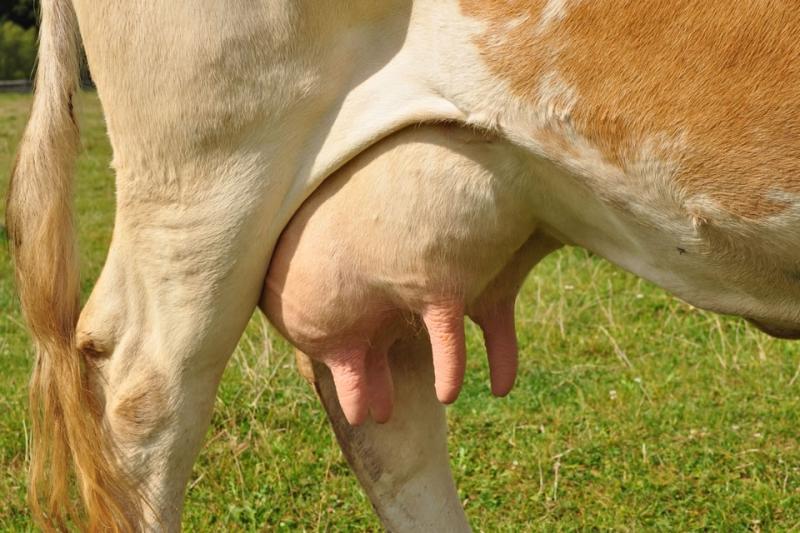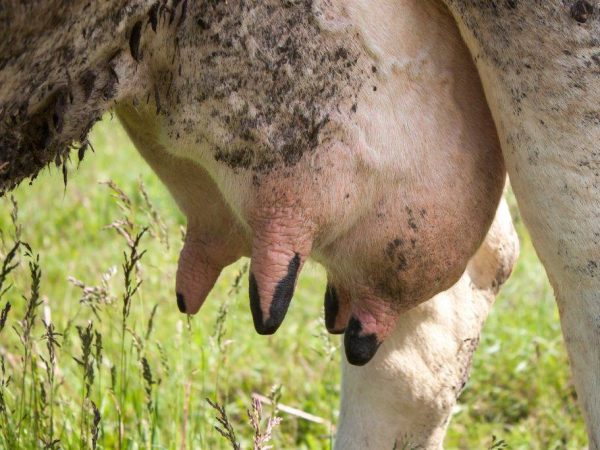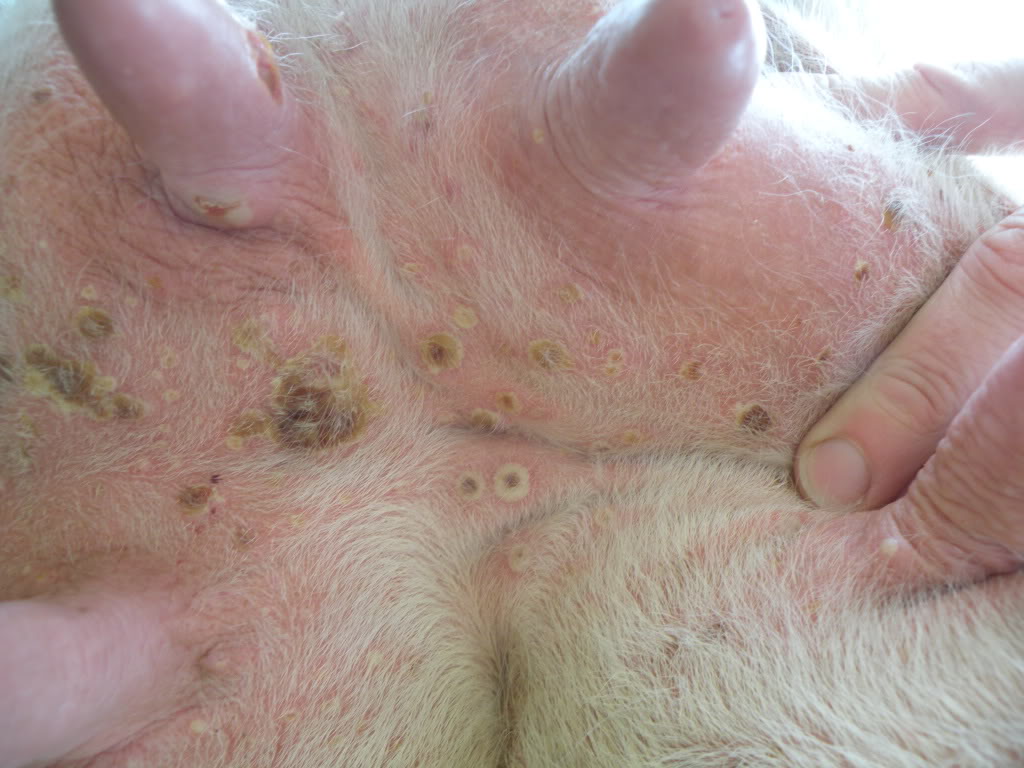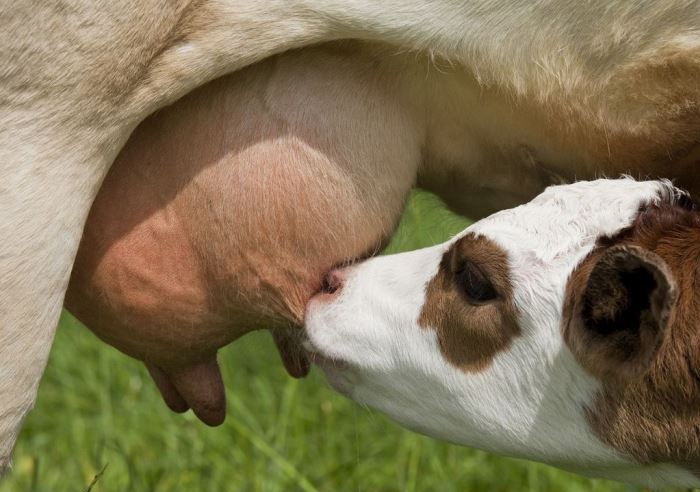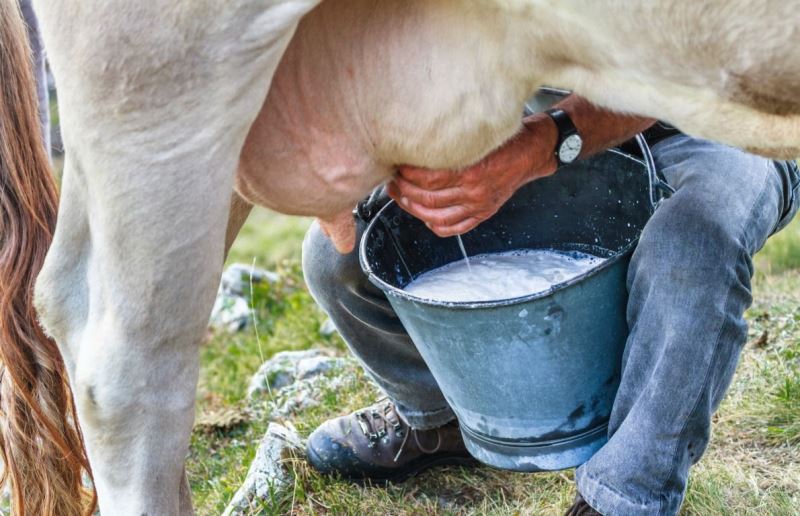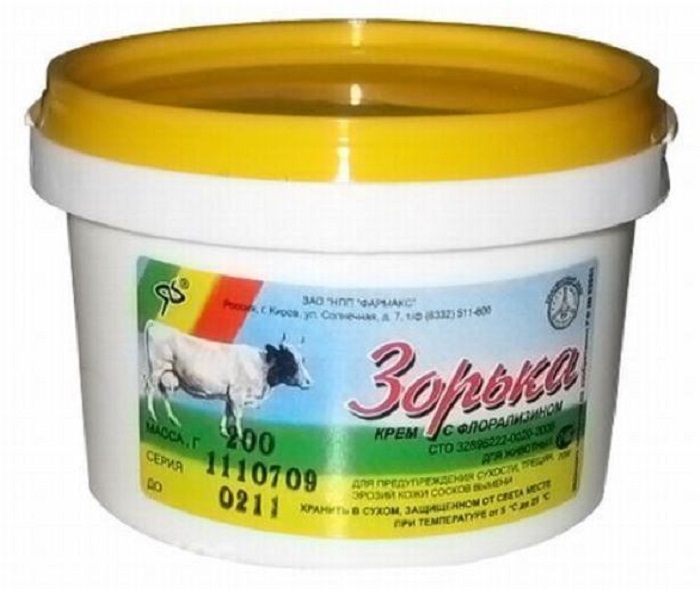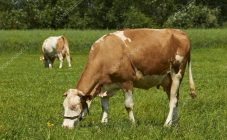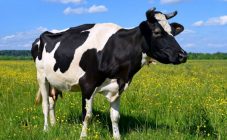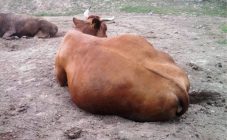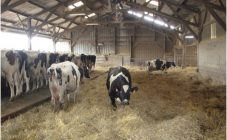Content:
A cow brings quality milk in sufficient quantities only if there are no health problems. It is important for the owner to monitor the condition of the cow and, if necessary, help her. The most important organ is the udder of the cow. Often, ailments approach him, including: warts, papillomas, bruises, swelling, cracks. It is possible to cure diseases, but for this you need to have competent information.
Care rules
- Cattle are kept in clean, light-colored barns or barns. The building must be equipped with ventilation.
- Each stall needs a soft bedding made of hay and straw. The cow is resting on it.
- The feed troughs are usually spacious and have bumpers to prevent livestock from stepping on food. Clean water is changed in the barn several times a day.
- In the summertime, the cattle are driven out to pastures. There she receives the necessary nutrition in the form of grass, which supplies the heifers with vitamins and minerals.
- In winter, the food of the cows becomes more dense and high in calories.
- During pregnancy, the owner monitors the launch of the cow, transfers it to dry feed. Veterinarians supervise the cow to make sure calving goes smoothly.
Burenka udder
The udder of a cow consists of four mammary glands. Its shape is bowl-shaped. It is located in the pelvic area. It is attached to the abdominal plane with a strong connective tissue. The mammary glands are located symmetrically. They are not communicated from within. Each lobe with the mammary gland has its own accumulation of milk.
The organ is covered with thin, delicate skin with light hair. Venous vessels are clearly visible on it. Inside there are arteries, nerves. The mammary glands are formed from connective tissue, glandular tissue and milk ducts.
Each lobe has nipples through which milk flows. How many teats does a cow have? Usually their number is 4, but there are some deviations in which three pairs of nipples can be observed. Each papilla ends with a sphincter, which does not allow the resulting product to pour out. Milk can only be removed by pressing the sphincter with your hands.
There is the concept of an udder index. It is used as an indicator of a cow's suitability for good milk production. Udder index implies uniform formation and development of the four mammary glands (quarters). It depends on hereditary characteristics. The index is calculated as a percentage of milk yield from fore-quarters. By nature, these quarters produce less milk than the hind quarters. The minimum value of the indicator should be at 40%. The higher the index, the better the cow is suitable for machine milking.
Organ diseases
Domestic heifers are susceptible to various ailments of the udder. Among the diseases stand out:
- Warts or papillomatosis;
- Smallpox;
- Injury;
- Edema;
- Cracked nipples.
Each sore has its own characteristics, causes and methods of getting rid of. An attentive owner must notice the disease in time and take appropriate measures.
Warts
Warts on the nipples of a cow or on the udder are scientifically called papillomas. The disease is called papillomatosis, papillomavirus. Warts look like benign growths or neoplasms on thin stems.Viral particles accumulate in them. Milking a sick cow is problematic. Most often, the growths are painful. Their number can be different: from one papilloma to several dozen.
Causes of papillomatosis:
- Unsanitary conditions;
- Lack of proper care and scarcity of the diet;
- Decreased immunity;
- Walking in the forest area where ferns are found;
- Infection from an adult cattle with a warts virus, etc.
Due to papillomatosis, the animal feels lethargic, its condition is painful. Immunity decreases sharply. Because of the pain, the pet does not allow people to come near it and does not allow itself to be milked. As a result, stagnation of the dairy product occurs, mastitis develops.
Treatment
If warts appeared at the end of winter, then, most likely, they arose due to a decrease in the body's defense system, due to cold weather, dampness, lack of vitamins. As soon as it gets warm and the cows are driven out to pastures, papillomas disappear. If the virus is rampant, then the cow is prescribed immunostimulants Ligfol, Mixoferon, etc. The foci of the virus are smeared with acetic acid, lapis, nitric acid, anti-beard, levomikol. You can get rid of the disease by adding magnesium oxide to the feed. It is important to keep the cow's udder clean. Her sleeping area should be clean, dry and warm.
Another answer to the question "how to treat udder warts in a cow?" implies nutritional optimization. It should contain minerals, vitamins, only pure water. A popular method of getting rid of papillomas is to apply a decoction of sprouted potatoes to the udder.
Smallpox
Finding a disease is easy. In cattle, the body temperature rises, there is no appetite, ulcers, blisters, scars are observed on the mammary glands and other parts of the body. The disease causes inconvenience to pets, the ulcers are constantly itching.
Common reasons:
- Unsanitary conditions;
- Cold, drafts in the room;
- Long-term illness due to which immunity has dropped.
Treatment
Smallpox must be treated correctly. The very first thing to do is see your veterinarian. He will prescribe antibiotics as well as antiseptic medications. Lubrication of the skin with glycerin, petroleum jelly, streptocide in the form of an ointment, etc., can help with the disease.
Injury
It is not easy to spot a bruise. During milking, a cow with a bruised udder behaves restlessly, experiences pain when pressing on the mammary glands. The appearance of puffiness or redness, a slight increase in body temperature are possible. By the way, an insect bite causes exactly the same symptoms. If the fight with another cow was tough, and the blow was strong, then a bruise can be seen with the naked eye. In this case, red clots are found in the milk.
If there are many different unnecessary things in the barn, then the cow can easily hit the udder when moving. Also, the female can be hurt by other animals.
Treatment
It is necessary to understand how strong the blow was. With a minor injury, no action is taken. It will pass by itself. The only condition in this case is to monitor the cow so that there are no more injuries. If the hematoma is strong, then the udder is washed, it is recommended to apply a cooling compress. Then Levomikol ointment is applied. After 48 hours, Vishnevsky or Camphor ointment is applied to the problem area.
Edema
The cow has one hard part of the udder inside what to do? This is most likely edema. Puffiness is observed due to a violation of blood circulation in the organ. In this case, only one side can be edematous.
Causes:
- The cow does not go out for a walk;
- She is in a state of pregnancy and has been overfed with juicy food;
- Toxicosis.
Treatment
Treatment involves transferring the cow to dry food, as well as organizing walks and minimal physical activity. The owner should do a massage, and it is better not to use the cream. Salt is removed from the diet. The veterinarian, having examined the swollen area, will prescribe injections of calcium gluconate, diuretics.
Cracked nipples
Cracks cause discomfort to the animal. Pathogenic microorganisms accumulate in them. The disease is dangerous in its consequences. Due to cracks, blood charging, mastitis can develop.
Most often, the disease occurs due to:
- Unsanitary conditions;
- Improper care;
- Walking in the tall, sharp grass.
Treatment
The organ is washed with warm water with the addition of soda. Wipe it thoroughly with a dry towel. After that, a remedy such as Ichthyol ointment is applied.
How to milk a cow
After calving
Why should a cow be milked immediately after pregnancy? Otherwise, the udder may be damaged. The first milking takes place 1-2 hours after calving. Before milking, the cow is given good quality hay and salted water. It is important to arrange comfortable, calm conditions for the cow. The stall is being cleaned out. The litter is changing.
Step by step process:
- Legs, abdomen and udders are rinsed with warm water and wiped dry.
- Udder massage is done. To do this, stroking each lobe with the hands from top to bottom. The duration of the procedure is 40 seconds.
- After this, the normal milking process begins.
- They begin to empty the glands from the posterior lobes.
- The process takes about 5 minutes. After calving, the cow has colostrum. He is fed to a calf.
- After that, a final 30-second massage is performed.
After a false pregnancy
It happens that a cow is left in vain. There is a dummy in her womb. After a false pregnancy, the animal is also distributed. This is done for 2 months. The process is almost the same as for a heifer after calving. The cow is also transferred to juicy food. Milking is carried out 3-5 times a day. However, massage should be done several times daily for 10-15 minutes.
Udder care
The mammary glands are a delicate organ. Accordingly, you need to handle it with care. Milking is recommended at the same time and all the time. Prepare warm water for rinsing the udder or disinfectant antibacterial wipes. After washing, the organ is blotted with a clean towel. The milkmaid's hands should be clean and warm. A short massage is performed before and after milking. After collecting milk, each nipple is treated with iodine, chlorhexidine or other antiseptic. The reason is that the channel from which the milk product comes out does not close immediately. Treatment with disinfectants will help protect the organ from pathogenic organisms.
In order for the skin on the udder not to peel off, dry out and not be injured, it is treated with various creams or ointments. They are applied during massage movements. Most popular remedies:
- Petrolatum;
- Burenka cream;
- Zorka ointment and cream;
- Lyubava cream;
- Cream my sun, etc.
Experienced veterinarian advice
- The cow must be in a comfortable environment.
- The attitude of the owner plays an important role in the life of the animal. Burenka needs love, care and affection.
- Particular attention is paid to the udder of the cow. Milking of the animal is organized in the morning, afternoon and evening, observing the rules of hygiene, applying a cream and performing a short massage.
- The first drops of milk should not end up in the bucket. They are contaminated. Therefore, a separate bowl is provided for them. Then this milk can be given to livestock or a cat.
- During milking, the udder must be emptied completely. Especially tasty and nutritious milk is that which is milked last.
- Milkmaids can also use udder cream for hand treatment. These products perfectly moisturize and soften the skin.
- It is important to respect the life cycles of a cow. For this, the owner maintains a calving calendar.
A cow's udder needs proper care. If any ailment happens, the owner must respond quickly and begin treatment, in consultation with a veterinarian.
